We absolutely hate food waste so whenever are off on a trip we try to make sure we have used up all the perishable food before we leave. But there are usually loads of things to do with all the packing and preparation for the trip. So we want some simple recipes that not only use up food but are easy to make and, above all, quick. Here are some ideas for zero waste recipes that will use up food before you hit the road.
None of these recipes take more than ten minutes’ preparation time. They may need a bit of cooking but you should be okay to abandon them in the oven or on the hob while you finish packing for your trip.
Fruit and Vegetables
If you are travelling for more than a few day, most vegetables will perish before you return, so it’s good to use them all up.
A great way to use up random leftover vegetables is to make soup. We often make an ‘end of the week’ soup even if we aren’t travelling imminently, to use all the spare vegetables. There is no fixed recipe.
Multi Vegetable Soup Recipe
Chop up all your spare vegetables into cubes that are roughly the same size. Place in a pan, top up with water to just about cover the veg, add a couple of stock cubes and bring to the boil. We tend to add any herbs and spices that we have in the cupboard. Favourites are smoked paprika, turmeric and cumin but add any combination you like. Cayenne pepper adds a touch of spice, Worcestershire sauce a bit of umami. Salt and pepper are essential. As soon as the vegetables are soft, whiz everything together with a hand blender to get a consistency you like – chunky or smooth, both are fine. Add a bit more water/stock if the soup’s too thick. If you have a block of cheese that won’t last until you get back, grate that and chuck it in. You can make the soup any time of the day and just reheat when you want to eat it -don’t let it boil, just warm it through. And you can be sure that you will have consumed at least ten of your ‘five a day’ portions of veg and can feel thoroughly virtuous before you hit the road.
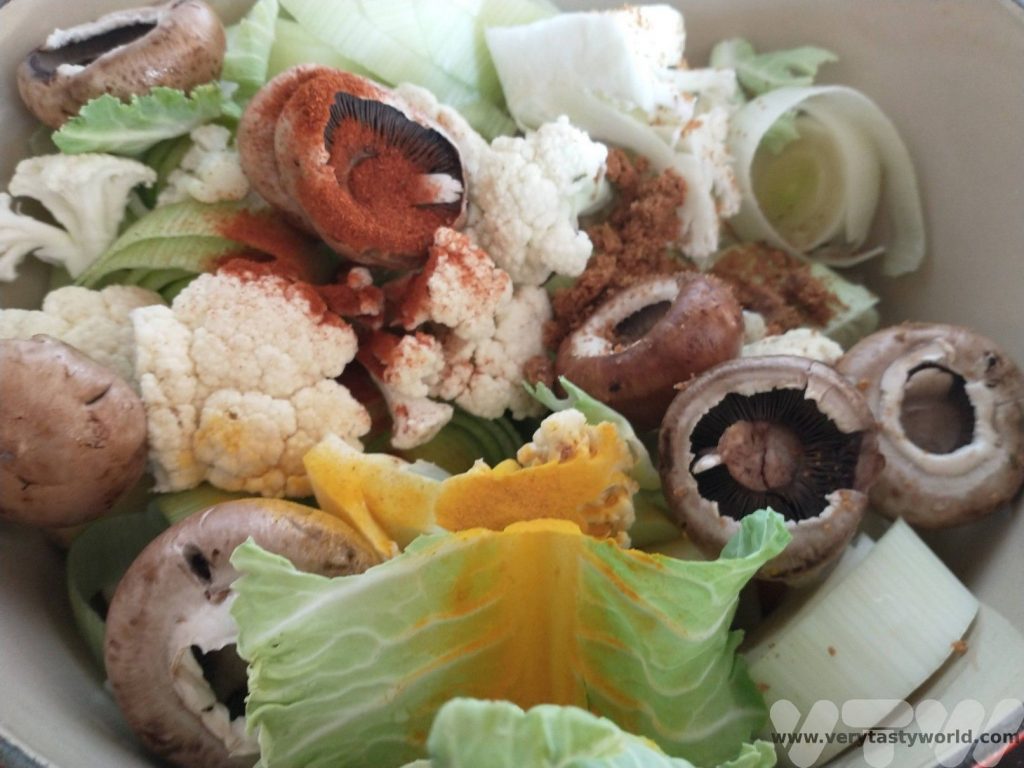
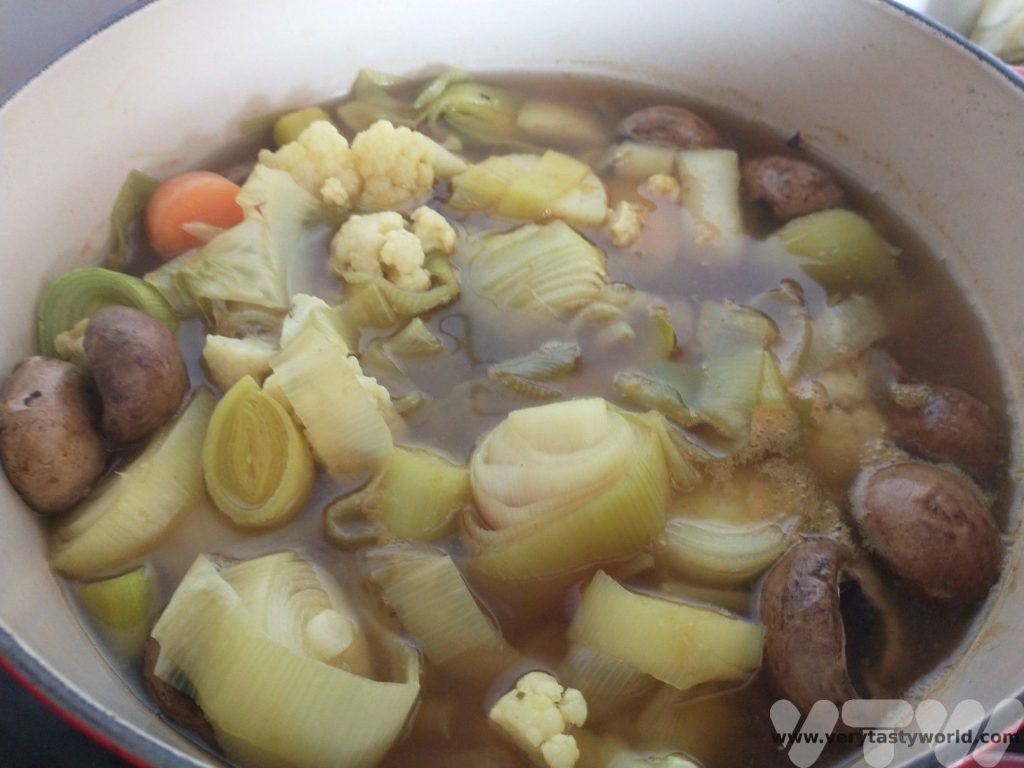
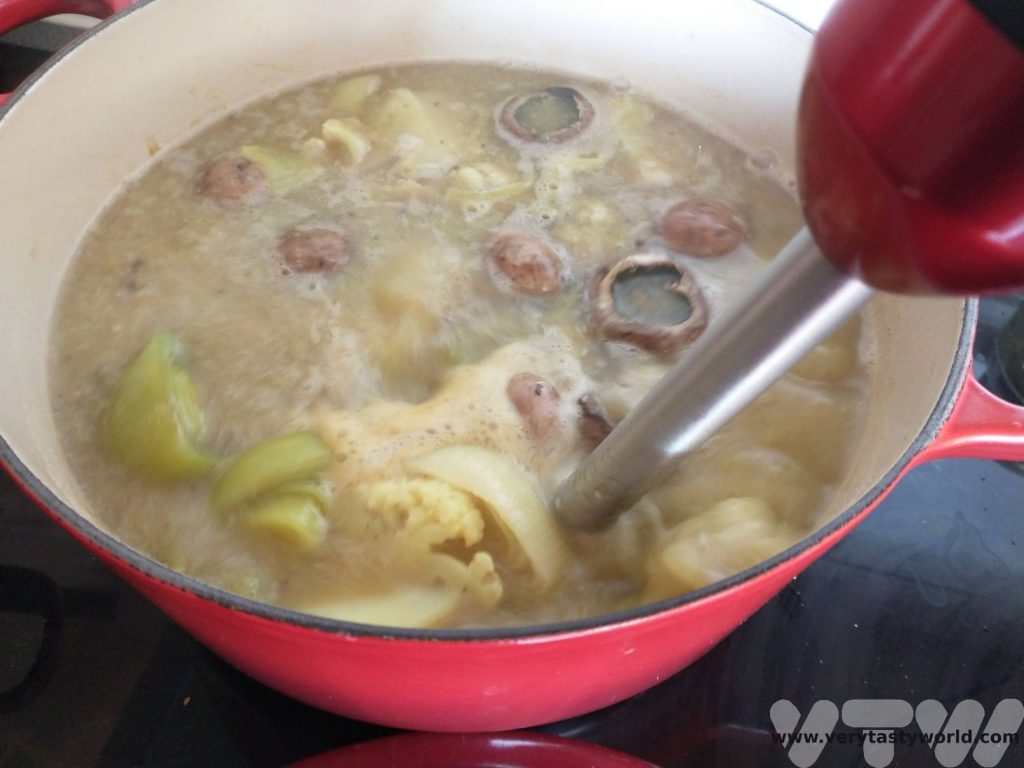
Any soup you don’t manage to eat (and we often end up making a lot of soup) you can just pop into the freezer. Perfect for a light meal when you return home.
Random Roast Vegetable Salad
A roasted vegetable salad is another great way of using up leftovers, especially if you have root veg hanging around. Chop up your vegetables. Cut harder root vegetables like parsnip and carrot or squash into smaller chunks than softer veg such as onions, mushrooms, tomatoes and bell pepper, so that they will cook in roughly the same length of time. Chuck them in a baking dish, slosh some vegetable oil over them, give them a shake and pop into the oven for 35-40 minutes until they are cooked and tender. Let them cool.
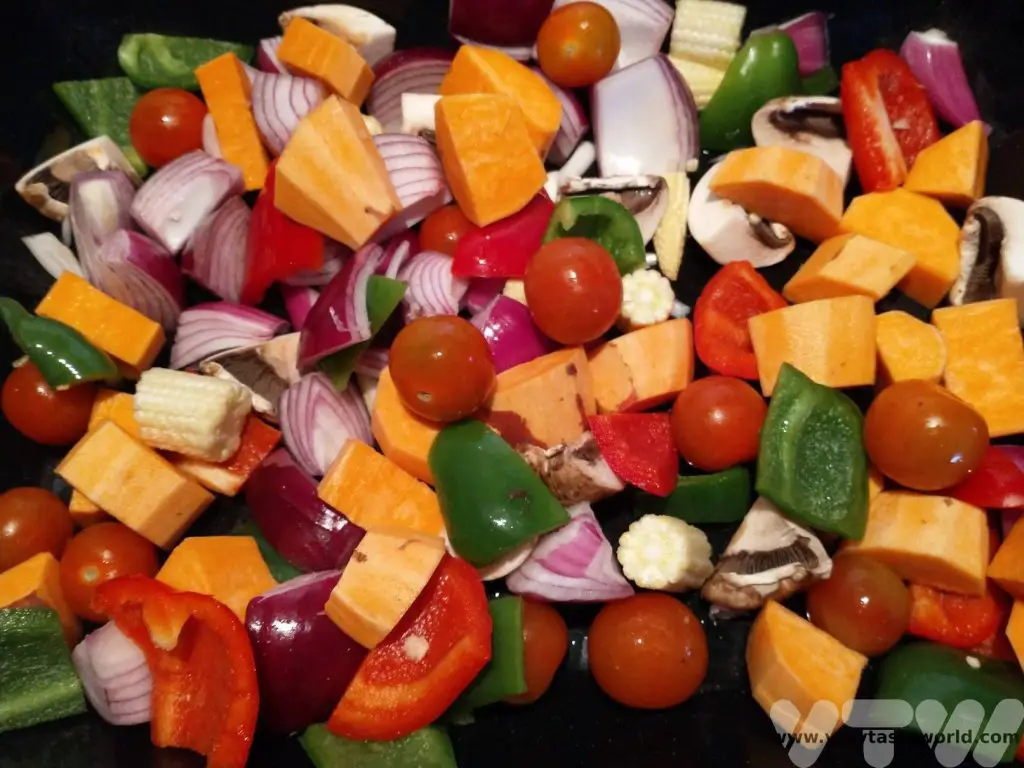
Then you can dress them with a standard vinaigrette – 2 parts olive oil to 1 part vinegar, a teaspoon of mustard and salt/pepper. We like another dressing – finely chopped preserved lemons and pomegranate molasses, with a sprinkle of sumac and black pepper. (The preserved lemons are very salty so we don’t add salt. If you don’t have preserved lemons, squeeze in the juice of a lemon and salt to taste.)
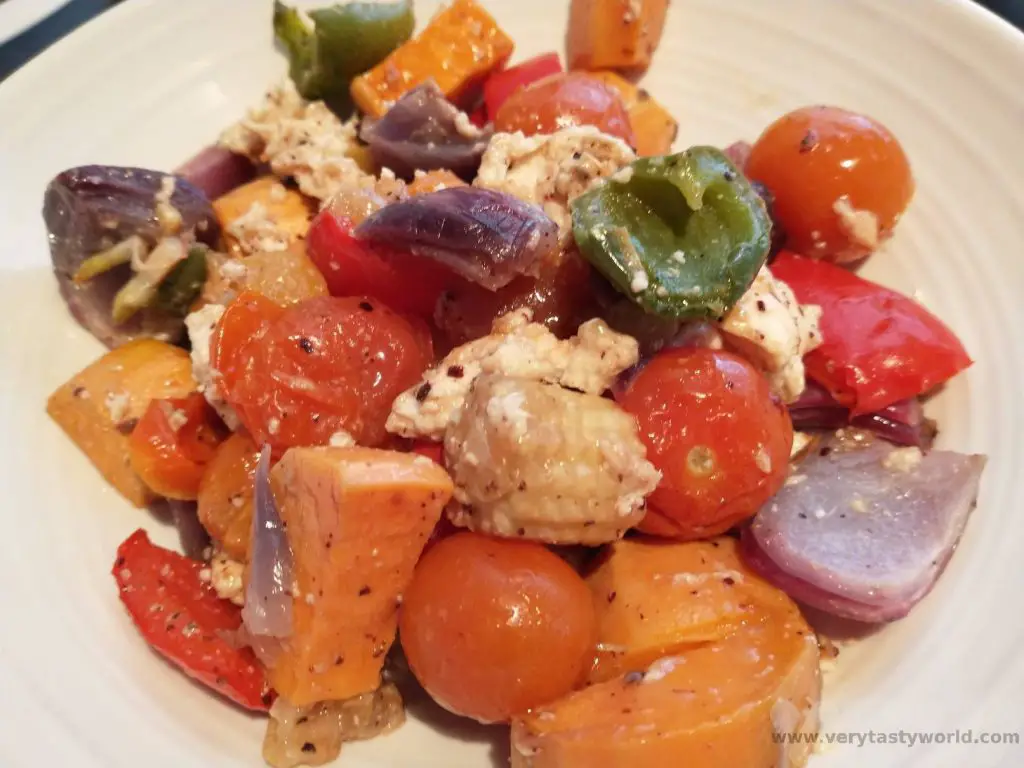
You could also add any leftover cheese. Feta and mozzarella work well. If you have any spare chunks of bread, you could toast them, tear them up into small pieces and add to the salad. They soak up the dressing beautifully.
Preserving Fruit and Vegetables
Freeze citrus fruits. Lemons and limes freeze pretty well. We quite often quarter the citrus fruits before we put them into the freezer. When we get home they are perfect for adding directly to a G&T– the frozen fruit will keep the drink cold (without diluting it) too.
Fruit – Many soft fruits, such as berries, freeze very well. Just pop them into the freezer. Or you can make fruity smoothie. Chuck them all together in a blender, add a dollop of yoghurt if you have some, and a teaspoon of honey if you like some added sweetness, and enjoy.
Salad – it’s often possible to make a pesto with salad leaves. We have a wild garlic pesto recipe where you could substitute salad leaves and any herbs for the wild garlic leaves. Add a clove of garlic or two to add some garlicky warmth. You could use the pesto to eat with pasta or to dress a roast vegetable salad.
Herbs – many herbs can be frozen. You can chop them up and freeze them in ice cube trays with a little water in each section. Once frozen, you can pop out the ice cubes and store them in a bag together. You can use them any time when you get home. And don’t forget that with some soft herbs, like coriander, the stalks have loads of flavour, so don’t forget to freeze those too.
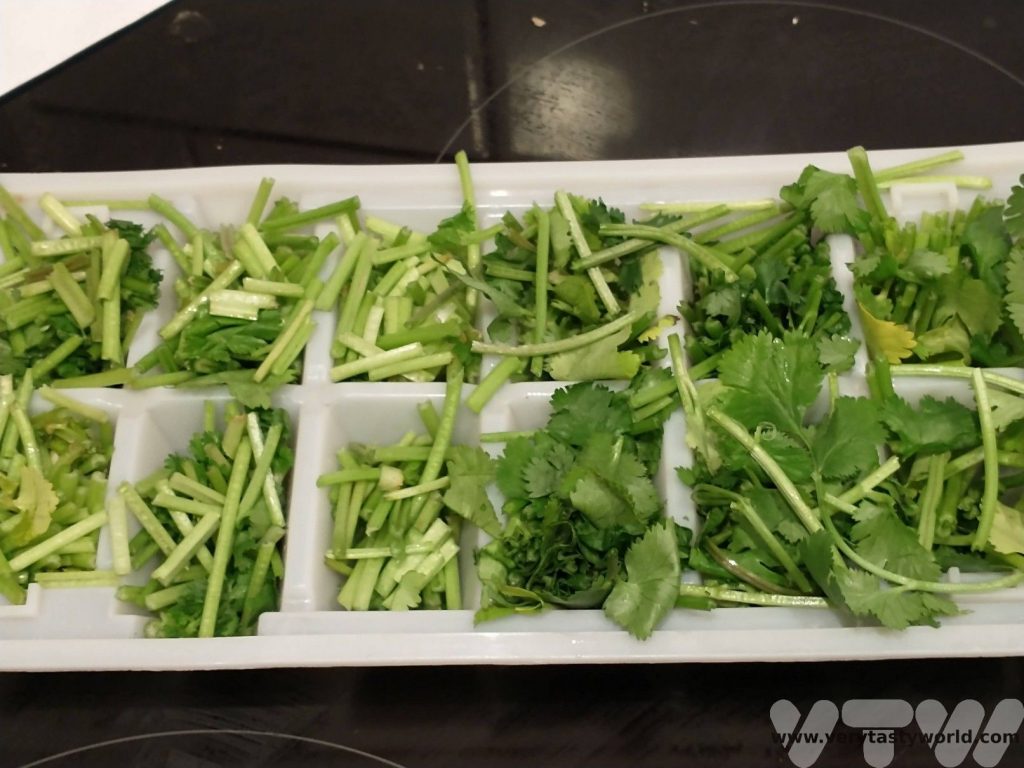
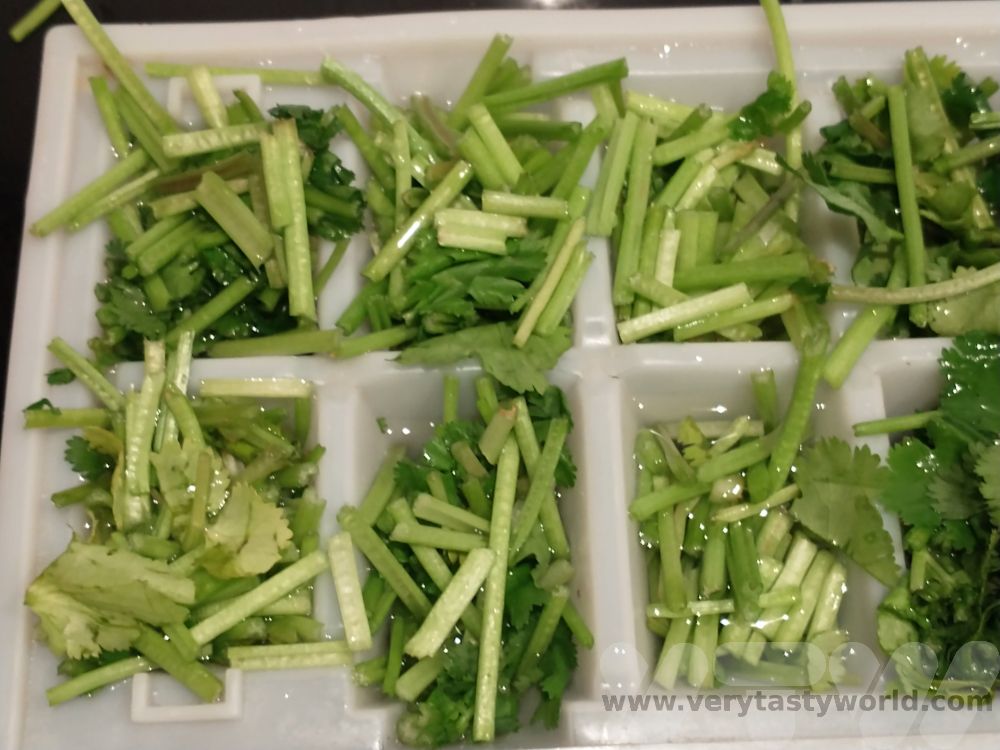
It’s also possible to make flavoured oils using herbs. Mix 100g of a herb (soft herbs such as parsley, coriander, wild garlic, sorrel, oregano/marjoram) with 100ml oil (any variety as long as it’s not expensive extra virgin olive oil as the herbs will mask its subtle flavour) and blend together. We don’t like storing oils for any length of time, even in the fridge, because there is a small risk of botulism. So we freeze them, again in ice-cube trays.
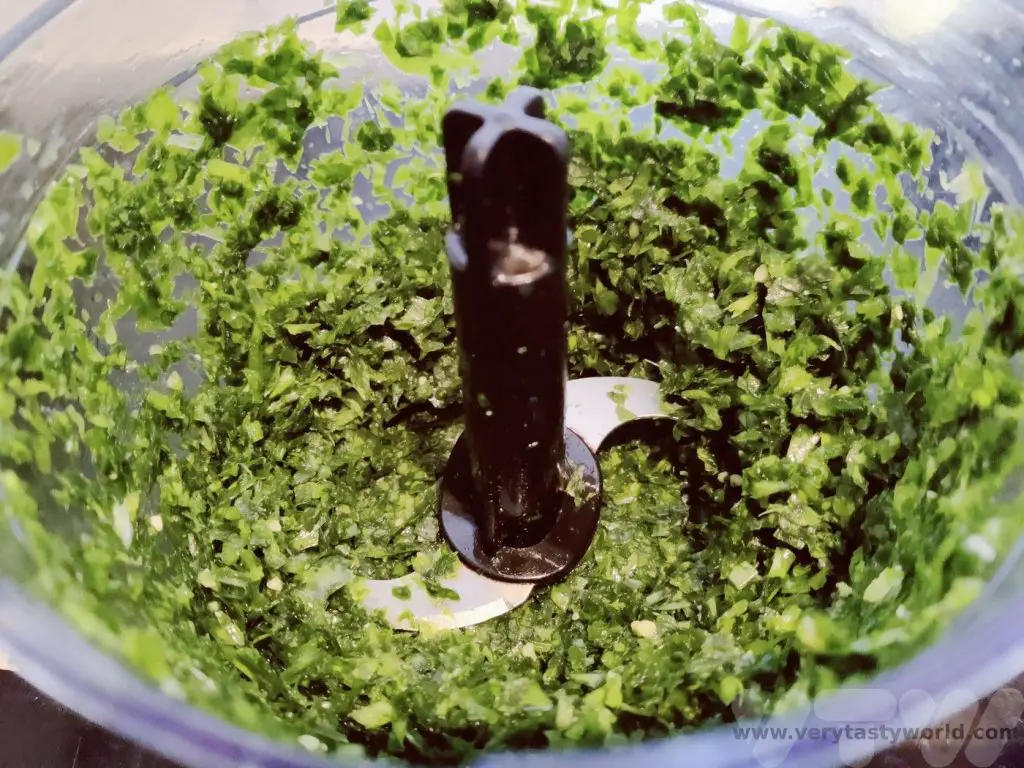
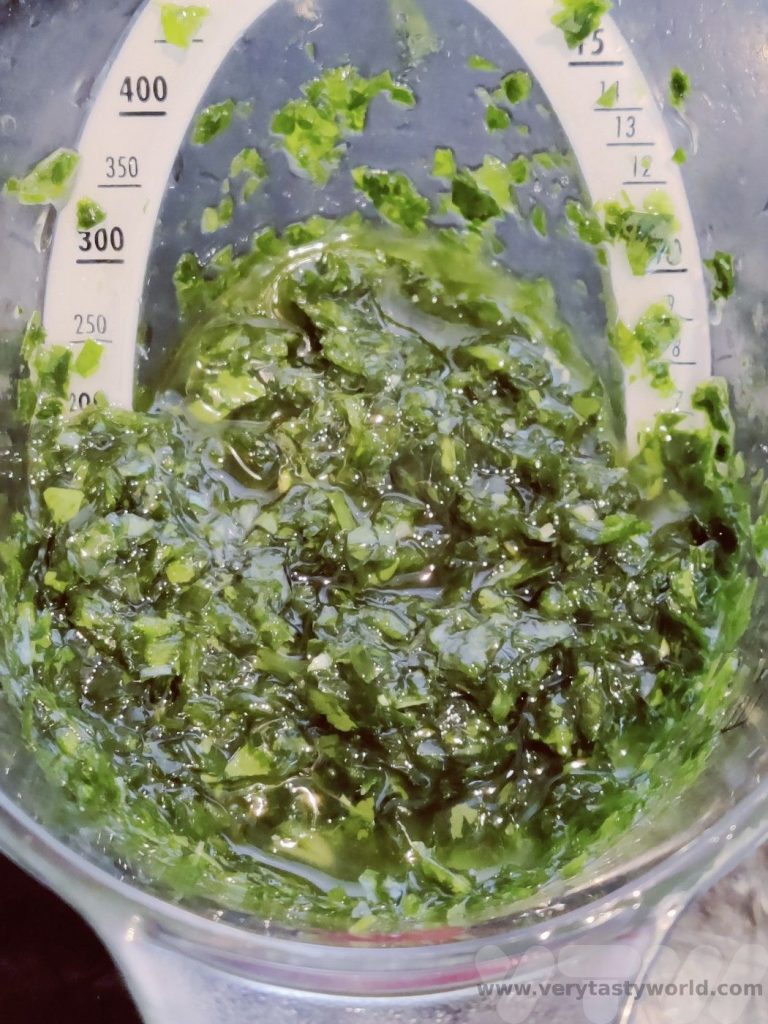
Next time you make a soup you can just take out a cube and melt it in as the soup cooks, splitting the soup with a lovely hit of herby flavour.
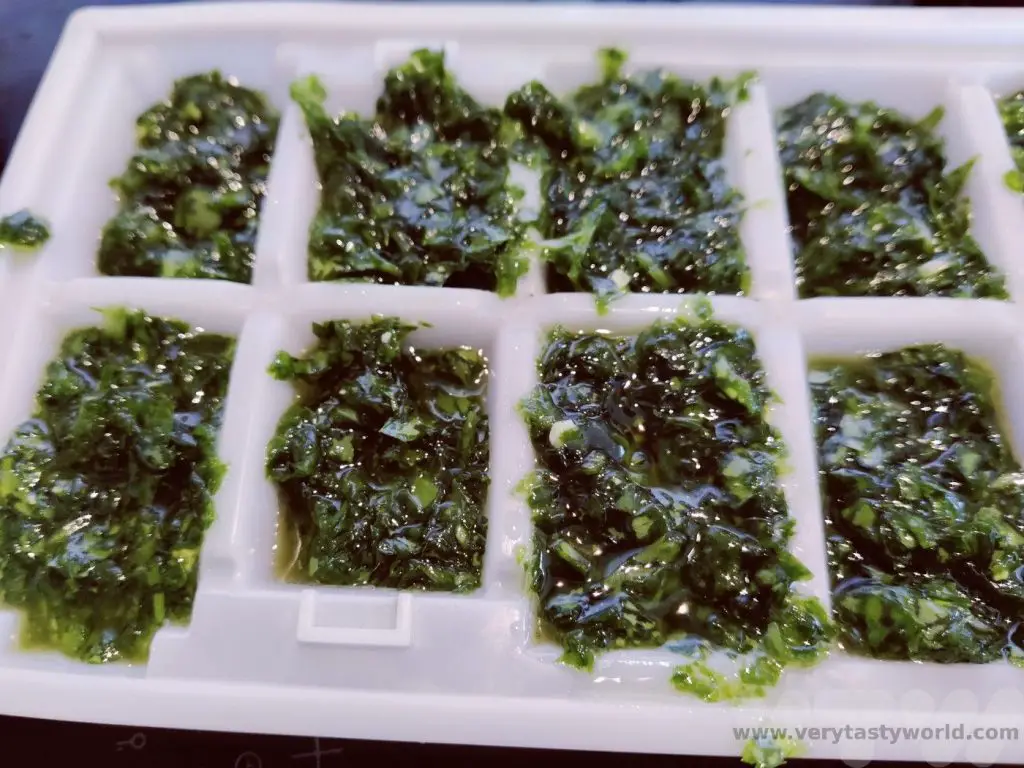
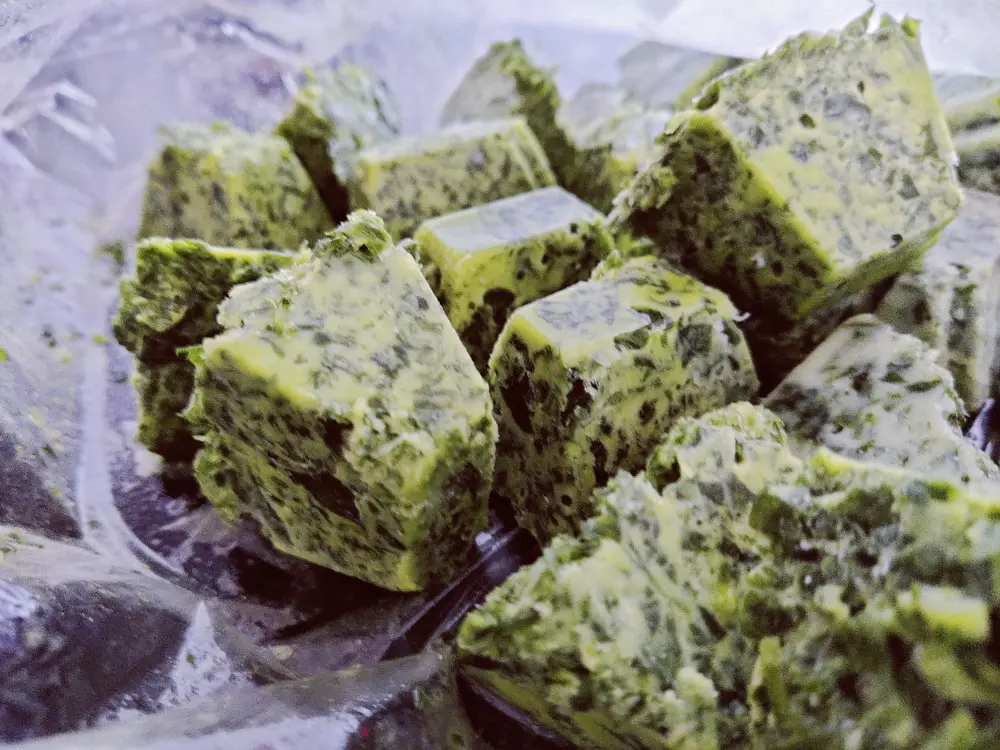
Chillies freeze pretty well, particularly the smaller ones. You can chop or micrograte frozen chillies directly into any dish you are making at a later date after you have returned home.
Getting in A Pickle
Some vegetables don’t freeze at all well – they turn into a mush on thawing. But you can pickle lots of vegetables.
Pickled Cucumber Recipe
Cucumbers are easy to pickle:

Slice them up, pop them in a clean jar. Warm up some vinegar (rice vinegar, white wine vinegar or cider vinegar work well) along with a teaspoon each of sugar and salt. Add a spare garlic clove, some peppercorns or mustard seeds if you like. Heat until the sugar and salt have dissolved and then pour over the cucumbers. Make sure they are submerged in the vinegar before you go away.
This will preserve them until you return home. They’ll be great on top of a burger as a pickle or as a sour side dish accompaniment to any meal.
Pickled Ginger Recipe
Ginger doesn’t freeze very well at all, we’ve found it goes squishy. However, it pickles beautifully. Just peel the ginger (scraping the skin off with a teaspoon is often easier than using a vegetable peeler, which can get a bit clogged up) and slice, then chop into small juliennes about half the length of a matchstick. Then put them into a container – a clean, empty jar – and top up with vinegar. We tend to use white vinegar or rice vinegar rather than a stronger vinegar such as malt or wine. For a 300ml jar, largely full of ginger and topped up with vinegar we add around 2 tsp sugar and 1 tsp salt. Shake to let the salt and sugar dissolve and let the flavours infuse. It will taste brilliant when you get home.
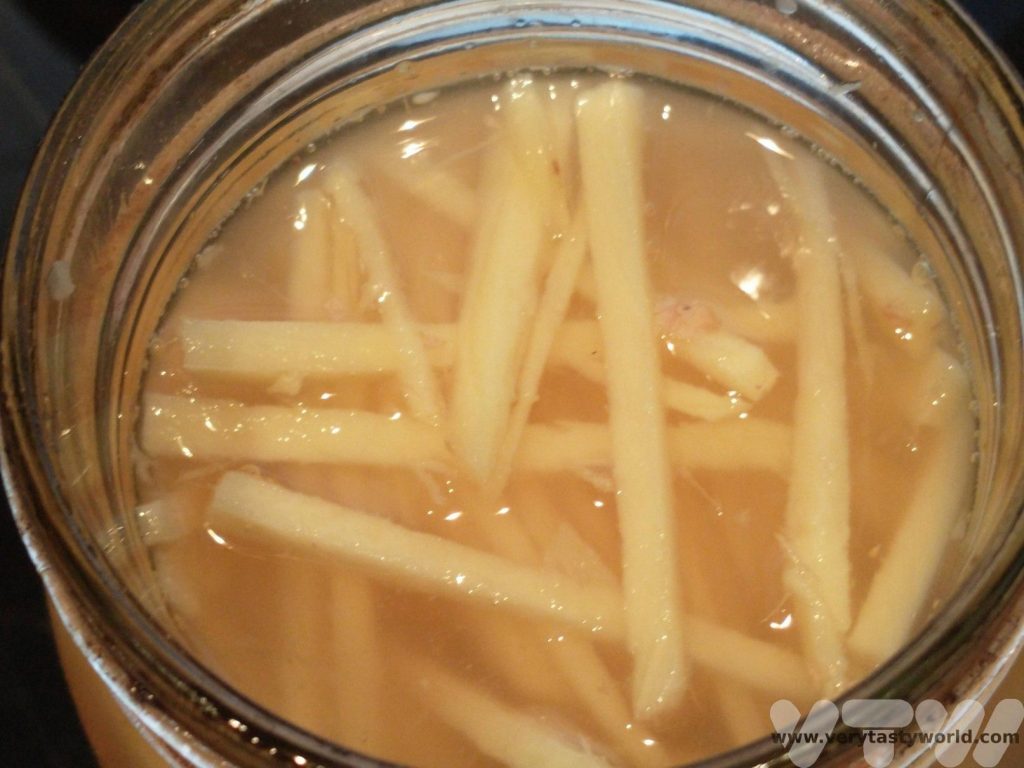
Perfect atop rice dishes or in stir-fries to give an extra zing. We have a recipe for Vietnamese pickled garlic, which isn’t too much trouble to make but needs a bit more work finely slicing the garlic, and is utterly delicious. If you want to pickled whole cloves of garlic to save yourself some time, just don’t bother to slice them.
Dairy
Some dairy products will last for the duration of a short trip. Butter and cheese should be fine in the fridge for a couple of weeks. For longer trips, butter will freeze well, in fact salted butter will last up to a year in the freezer (unsalted will be okay for six months). Hard cheeses are generally fine to put into the freezer and shouldn’t lose flavour when you defrost them naturally. Freezing soft cheese isn’t a great idea as it tends to go a bit watery on thawing. We have a very easy recipe for using up cream cheese.
Cream Cheese And Tinned Fish Dip Recipe
You can make an easy dip using soft cheese by combining a packet of soft cheese with a can of tuna fish or mackerel, a dollop of mayonnaise and some flavouring, depending on what you have in the cupboard. We particularly like a couple of teaspoons of creamed horseradish, but celery salt, cayenne, paprika and/or a squeeze of lemon juice work well. We used smoked fish here, but it works really well with tinned fish.
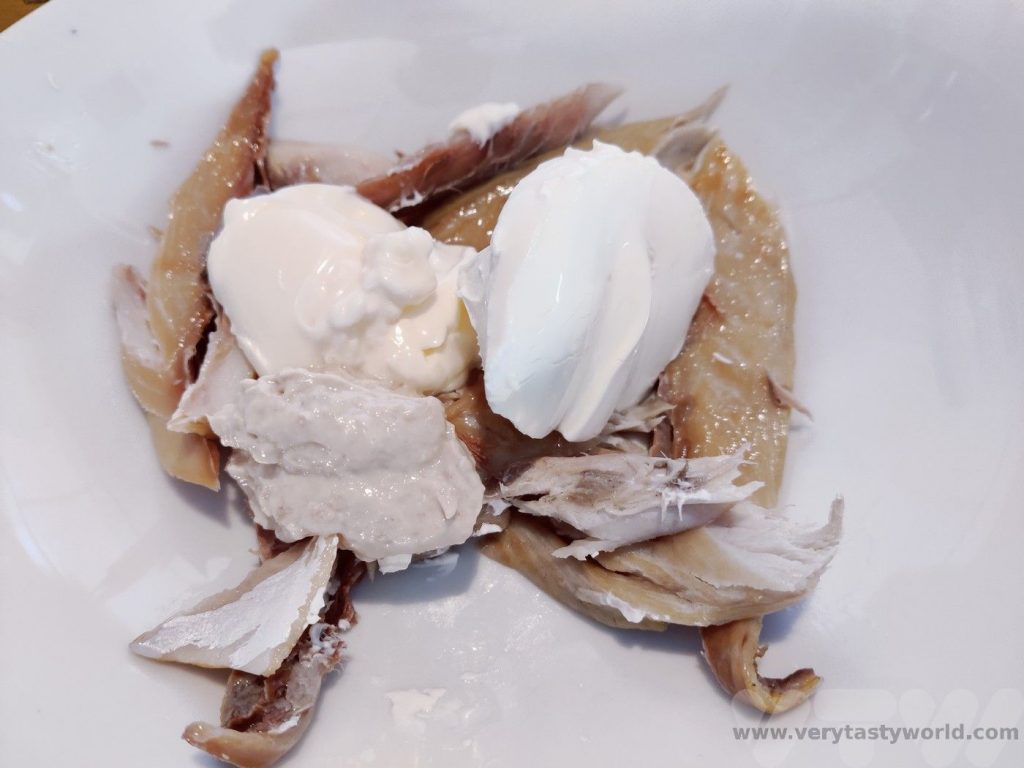
Sprinkle in salt and pepper and mix it all together. You can serve it as a dip with raw vegetables such as leftover carrots, celery, cauliflower or cucumber, cut into juliennes.
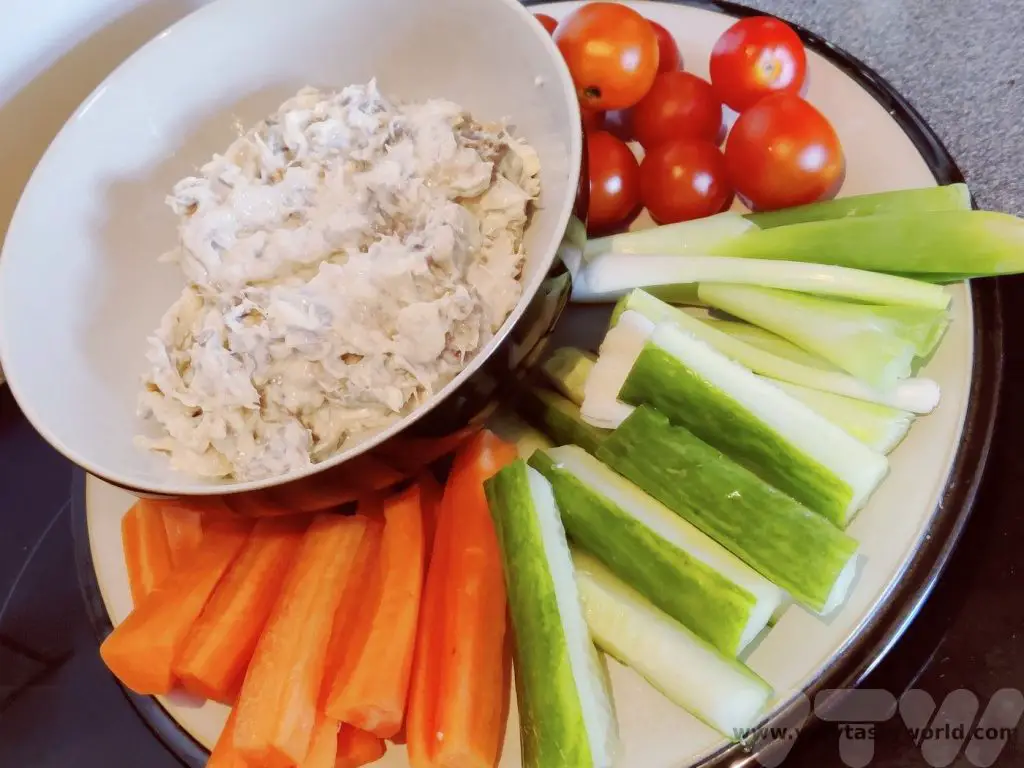
It’s great on toast too, especially if you need to use up some bread.
Yoghurt – can be stirred into your soup to add a bit of tang. If you have a load of fruit that you need to eat, chop it up, bung it in a blender with the yoghurt and create a lovely smoothie. Yoghurt is also used in overnight oats – a really great breakfast for travellers (see below).
Your Daily Bread
Make sure the bread bin is empty – you don’t want to come back to the remnants of a mouldy loaf which you’ve forgotten to eat! If you have some sliced bread left over you can toast the slices, cut them into cubes and add them to your vegetable soup or salad as croutons. If you have some garlic kicking about, peel a clove and rub it onto the (whole) toasted slice of bread before cubing. Or you can just toss them in olive oil and bung the cubed bread into the oven or air fryer for a few minutes until they are golden brown.
Breakfast of Champions for the Day of Travel
Overnight oats is a really easy breakfast that uses up fruit and dairy and can be fully prepared the night before. Again, it’s a really flexible recipe that you can make with any leftover fruit. We always have dried oats in our store cupboard, as they last for ages, and we usually have some dried fruit as well.
Overnight Oats Recipe
Dollop 3 dessertspoons of yoghurt into a bowl (or split whatever you have evenly between the number of people wanting breakfast). Sprinkle 2 dessertspoons of oats over the top. Add chopped fruit. Fresh fruit and dried fruit work well, just use what you have. Mix it all together and pop it in the fridge overnight. It is ready to eat the following morning.
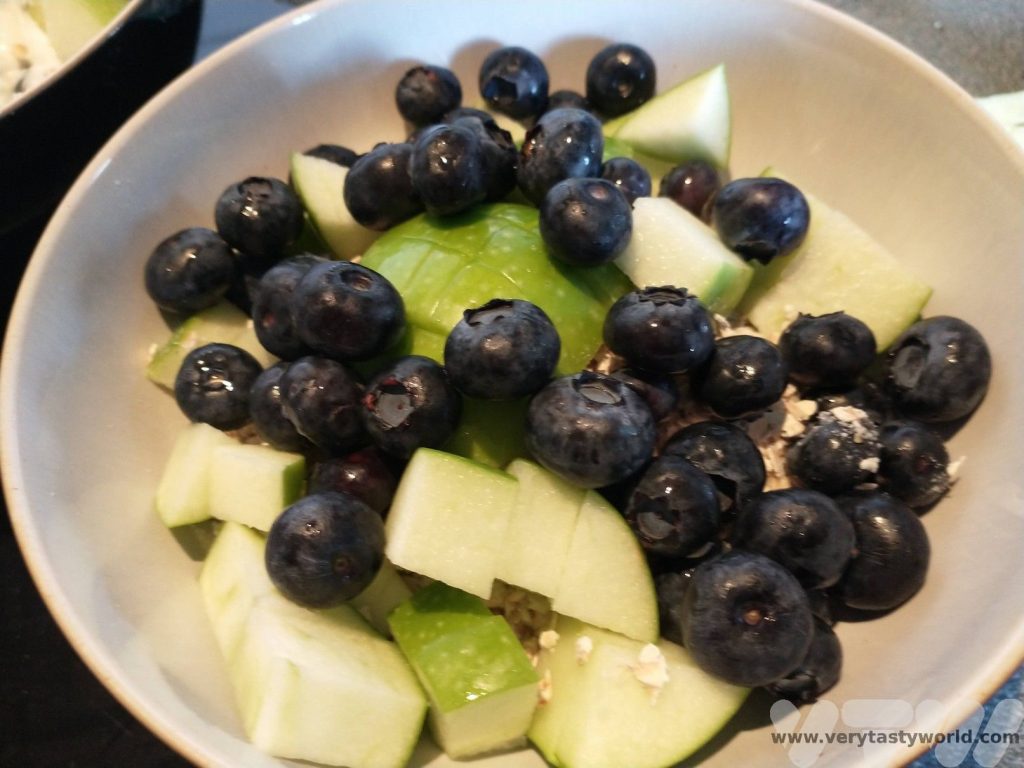
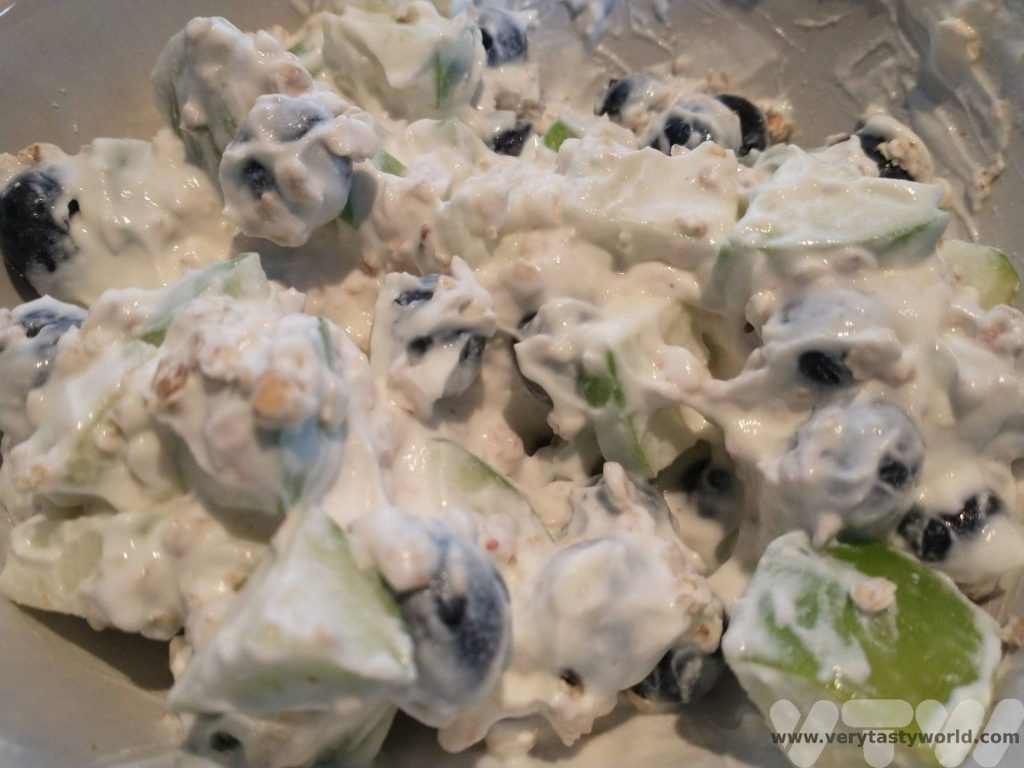
It looks a right mess (you could prettify it in the bowl if you want, but we plan just to scoff it) but it tastes great and will definitely ensure that you don’t go hungry as you embark on your journey.
Happy travels!

- RECIPE: How To Make Elderflower Champagne
- RECIPE Oyakodon Donburi
- Zero Waste Recipes Before Your Holiday
- RECIPE: Vegetable Biryani Tamil Nadu Style
- RECIPE: Vegan Wild Garlic Pesto
- Recipe: Venetian Pasta Sauce
- RECIPE: Biryani Raita Recipe
- RECIPE: How to Make Costa Rica’s Gallo Pinto
- Recipe: Japanese Simmered Pork Belly – Buta no Kakuni











